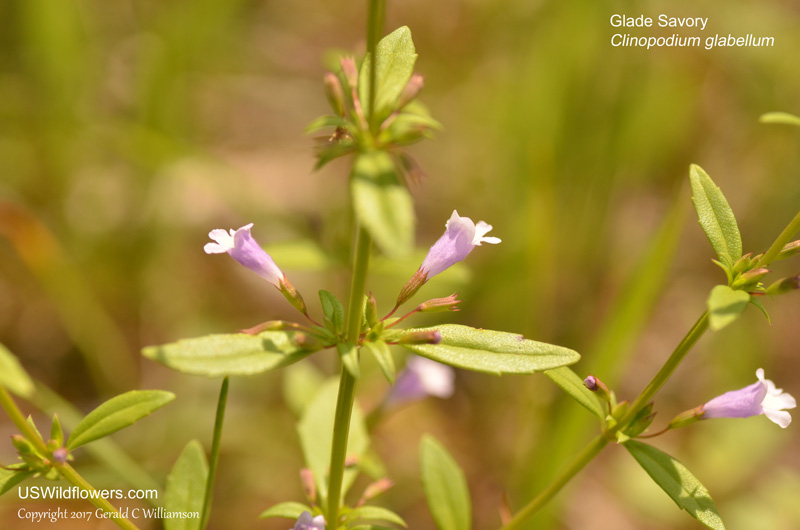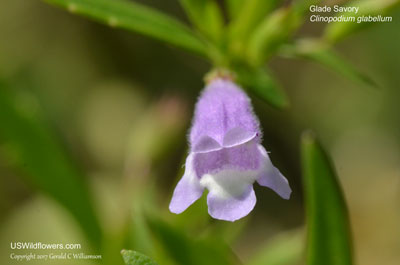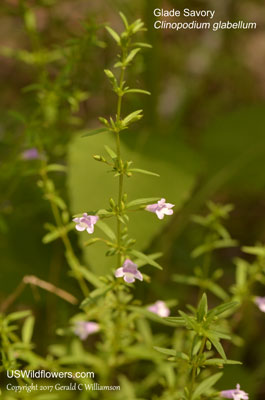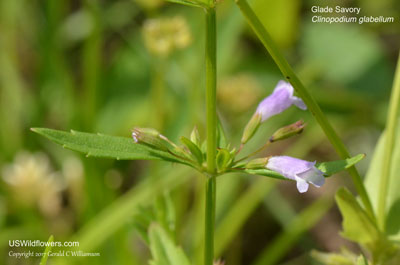Wildflowers of the United States | |||||||||||||
| |||||||||||||
Clinopodium glabellum - Glade Savory, Glade Calamint, Glade Wild Basil, Ozark Calamint. The genus Clinopodium is in flux; depending on whether you, as many authorities do, include various other genera in the Mint family such as Satureja (Satureja glabella var. glabella is a synonym for Clinopodium glabellum, as is Calamintha glabella), Acinos, Calamintha, and more, estimates of the number of species in the genus range from 20 to around 100. The genus has member species around the globe, and even narrowly circumscribed the several species found in the United States are spread across the nation, although most species individually have relatively narrow distribution.
| Clinopodium glabellum (Glade Savory) is one of those narrowly distributed species, a small plant found in limestone glades in only three states - a couple of counties in Alabama, a several counties in central Tennessee, and a few counties in northern Kentucky. Although the USDA map to the right shows it in Virginia, most authoritative sources believe those reports are due to common confusion with the very similar and much more widely distributed Clinopodium arkansanum (Arkansas Calamint). That confusion probably also explains the common name shown in the USDA Plants database - Ozark Calamint, even though the (erroneous) range shown by the USDA doesn't include any part of the Ozarks. C. arkansanum has leafy stolons while C. glabellum does not. The stem leaves of C. arkansanum are smaller than those of C. glabellum, and perhaps the easiest diagnostic between the two are that the flowering stem leaves of C. arkansanum are entire (without teeth or lobes) while those of C. glabellum have a few teeth. Found in: AL, KY, TN Leave comments on Clinopodium glabellum at this link.  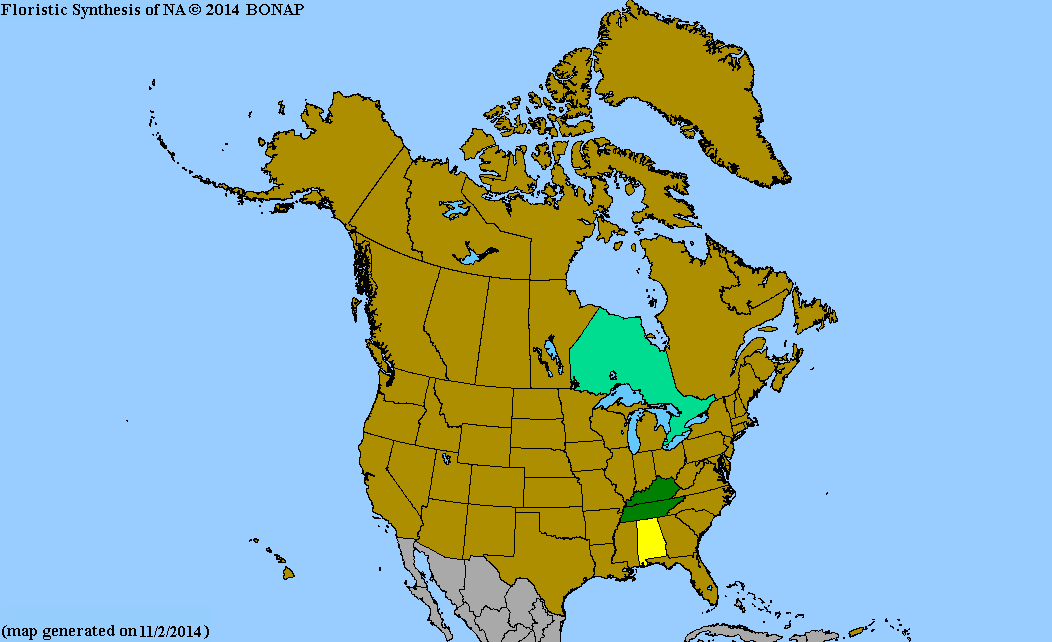 Map courtesy of The Biota of North America Program. Map color key Search Our Database: Enter any portion of the Scientific, Common Name, or both. Do a general Google search of the entire site: #ad
| #ad
| | ||||||||||
|
Commercial / Cookie Notice Looking for Wildflowers for a specific state? Check here: | |||||||||||||
|
All content except USDA Plants Database map Copyright Gerald C. Williamson 2024 | |||||||||||||
Code Update 20230302

